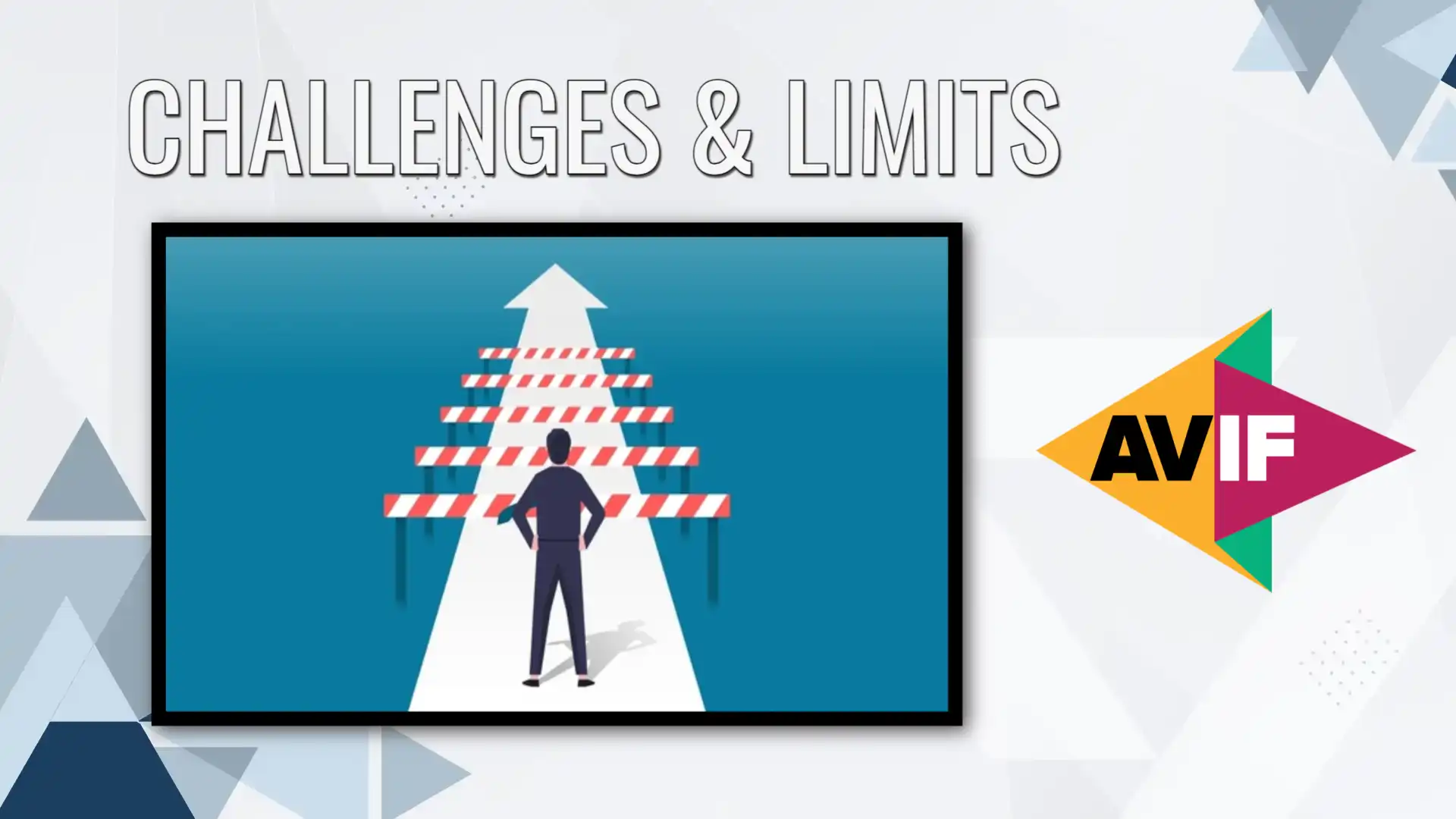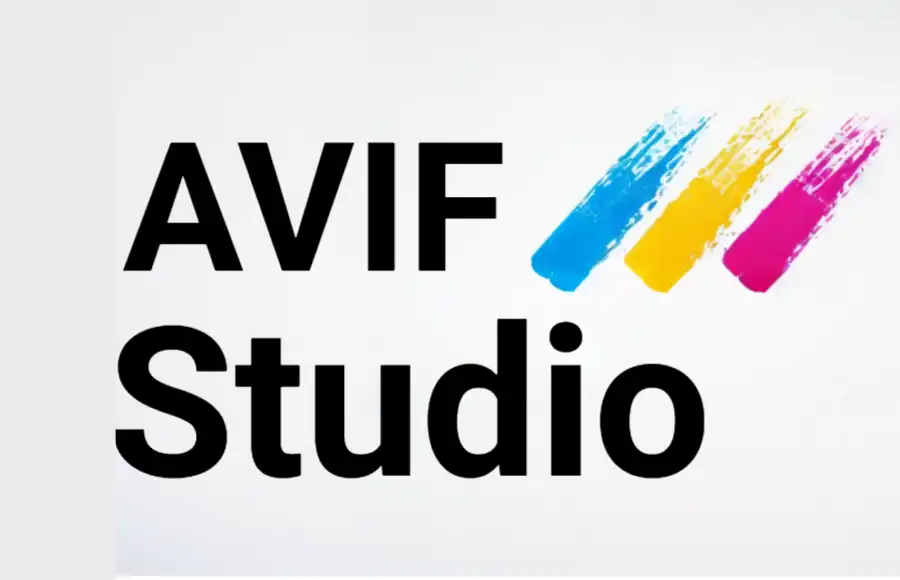The Downsides of AVIF: Challenges and Limitations

AVIF (AV1 Image File Format) has emerged as a promising contender in the realm of image compression technology, promising significant improvements over existing formats like JPEG and WebP. However, while AVIF offers numerous benefits, it also comes with its own set of challenges and limitations that users and developers must consider. In this article, we explore some of the downsides of AVIF.
1. Limited Browser Support & Lower adoption rates:
One of the primary challenges with AVIF is its limited browser support. While major browsers like Chrome ,Firefox, Edge, Safari and Opera have added support for AVIF, adoption rates are still relatively low compared to more established formats like JPEG and PNG. This limited support can make it difficult for developers to fully embrace AVIF without worrying about compatibility issues for their audience.
2. Encoding Complexity:
Unlike simpler image formats like JPEG, encoding AVIF files requires significant computational resources and expertise. The AVIF encoding process involves various advanced compression techniques, including intra-frame and inter-frame prediction, which can be computationally intensive and time-consuming. This complexity can make it challenging for developers to integrate AVIF into their workflows, especially for real-time or high-volume applications.
3. Decoding Performance:
While AVIF offers superior compression efficiency compared to JPEG, decoding AVIF files can be more demanding in terms of CPU and memory resources. This can lead to slower loading times and reduced performance, particularly on devices with limited processing power or older hardware. As a result, developers need to carefully balance the benefits of smaller file sizes against the potential impact on user experience.
4. Lack of Tooling and Ecosystem:
Compared to established image formats like JPEG and PNG, the AVIF ecosystem is still relatively immature. There is a lack of comprehensive tooling and support for AVIF across the software development lifecycle, including image editing, manipulation, and optimization tools. This can make it difficult for developers to effectively incorporate AVIF into their workflows without resorting to manual or ad-hoc solutions.
5. Patent and Licensing Issues:
AVIF is based on the AV1 video codec, which is developed by the Alliance for Open Media (AOMedia). While AV1 is royalty-free and open-source, there have been concerns about potential patent claims and licensing issues surrounding the technology. This uncertainty can deter some users and organizations from fully embracing AVIF, especially those operating in industries with strict intellectual property regulations.
6. Quality Variability:
While AVIF generally offers superior image quality at lower bitrates compared to JPEG, the quality can vary depending on the encoding parameters and settings used. Achieving optimal compression efficiency with AVIF often requires fine-tuning of various encoding parameters, which can be challenging for users without specialized knowledge or experience. This variability in quality can lead to inconsistencies in the visual appearance of images encoded using AVIF, especially when comparing them across different platforms and devices.
In conclusion, while AVIF holds great promise as a next-generation image compression format, it also presents several challenges and limitations that need to be addressed. From limited browser support and encoding complexity to concerns about decoding performance and patent issues, developers and users must carefully evaluate the trade-offs before fully embracing AVIF in their workflows. As the technology matures and adoption rates increase, these challenges are likely to be mitigated, paving the way for wider acceptance and adoption of AVIF as the new standard for image compression on the web.
Frequently Asked Questions
- What are some of the challenges associated with the limited browser support for AVIF?
- How does the encoding complexity of AVIF compare to that of traditional image formats like JPEG?
- What potential performance issues might arise during the decoding process of AVIF files?
- In what ways does the immaturity of the AVIF ecosystem affect its adoption by developers?
- Can you discuss the concerns surrounding patent and licensing issues related to AVIF and the AV1 codec?
- What are some of the factors contributing to the variability in image quality when using AVIF compression?
- How might the computational demands of AVIF encoding impact real-time applications or high-volume workflows?
- What are the implications of slower loading times for websites and applications using AVIF images?
- How does the lack of comprehensive tooling for AVIF affect the image editing and optimization process?
What are some of the challenges associated with the limited browser support for AVIF?
One of the significant challenges associated with the limited browser support for AVIF is compatibility issues for users. While major browsers like Chrome and Firefox have started to add support for AVIF, many users still rely on older browsers or devices that do not support this format. This can lead to inconsistent experiences for users when accessing websites or applications that utilize AVIF images. Developers must either provide fallback options or risk alienating a portion of their audience.
Another challenge is the slow pace of adoption by browsers. Even though AVIF offers superior compression efficiency and image quality compared to traditional formats like JPEG, adoption rates among browsers have been relatively slow. This can be frustrating for developers who want to take advantage of the benefits of AVIF but are hesitant to do so due to the limited reach of this format. As a result, developers may need to wait for broader browser support before fully embracing AVIF in their projects.
How does the encoding complexity of AVIF compare to that of traditional image formats like JPEG?
The encoding complexity of AVIF is significantly higher compared to traditional image formats like JPEG. AVIF utilizes advanced compression techniques, including intra-frame and inter-frame prediction, to achieve superior compression efficiency and image quality. These techniques require more computational resources and expertise to implement effectively. As a result, the encoding process for AVIF files can be more time-consuming and resource-intensive.
In contrast, JPEG encoding is relatively straightforward and has been widely adopted for decades. Most image editing software and libraries support JPEG compression out of the box, making it accessible to a wide range of users. However, the trade-off for this simplicity is lower compression efficiency and potentially lower image quality compared to AVIF. Developers must weigh the benefits of using AVIF against the increased complexity and resource requirements of the encoding process.
What potential performance issues might arise during the decoding process of AVIF files?
During the decoding process of AVIF files, several potential performance issues may arise. Firstly, decoding AVIF files can be more demanding in terms of CPU and memory resources compared to traditional formats like JPEG. This increased resource usage can lead to slower loading times and reduced performance, especially on devices with limited processing power or older hardware.
Additionally, the variability in image quality when using AVIF compression can also impact decoding performance. AVIF files may require more processing power to decode, especially if they were encoded with higher compression settings or complex encoding parameters. This can result in inconsistent decoding times and performance across different images, making it challenging to predict the impact on user experience.
In what ways does the immaturity of the AVIF ecosystem affect its adoption by developers?
The immaturity of the AVIF ecosystem affects its adoption by developers in several ways. Firstly, there is a lack of comprehensive tooling and support for AVIF across the software development lifecycle. This includes image editing, manipulation, and optimization tools, which are essential for developers to effectively incorporate AVIF into their workflows. Without robust tooling, developers may find it challenging to work with AVIF files efficiently.
Furthermore, the limited availability of educational resources and community support for AVIF can hinder its adoption by developers. Unlike more established formats like JPEG and PNG, there are fewer tutorials, documentation, and online forums dedicated to AVIF. This lack of support can make it difficult for developers to learn about AVIF and troubleshoot issues that arise during implementation.
Can you discuss the concerns surrounding patent and licensing issues related to AVIF and the AV1 codec?
AVIF is based on the AV1 video codec, which is developed by the Alliance for Open Media (AOMedia). While AV1 is touted as a royalty-free and open-source codec, there have been concerns about potential patent claims and licensing issues surrounding the technology. Despite efforts by AOMedia to secure patent licenses from key stakeholders, there is still some uncertainty regarding the intellectual property landscape surrounding AV1 and AVIF.
These concerns can deter some users and organizations from fully embracing AVIF, especially those operating in industries with strict intellectual property regulations. The fear of potential legal disputes or licensing fees associated with AVIF adoption may outweigh the perceived benefits of using this format. As a result, some developers may choose to stick with more established formats with clearer patent and licensing terms.
What are some of the factors contributing to the variability in image quality when using AVIF compression?
Several factors contribute to the variability in image quality when using AVIF compression. Firstly, the encoding parameters and settings used during the compression process can significantly impact the final image quality. Adjusting parameters such as the quality level, encoding speed, and color space conversion can result in different compression ratios and visual artifacts.
Furthermore, the complexity of the image content itself can influence the effectiveness of AVIF compression. Images with high levels of detail or texture may require higher bitrates to maintain satisfactory image quality, while simpler images may be compressed more efficiently. Additionally, the choice of encoder implementation and optimization techniques can also affect the perceived quality of AVIF images.
How might the computational demands of AVIF encoding impact real-time applications or high-volume workflows?
The computational demands of AVIF encoding can pose challenges for real-time applications or high-volume workflows. Unlike simpler image formats like JPEG, encoding AVIF files requires significant computational resources and expertise. The encoding process involves advanced compression techniques such as intra-frame and inter-frame prediction, which can be computationally intensive and time-consuming.
In real-time applications or high-volume workflows, the increased encoding complexity of AVIF may lead to slower processing times and reduced throughput. This can impact the responsiveness and efficiency of the application or workflow, especially in scenarios where images need to be processed and delivered quickly. Developers may need to allocate more resources or optimize their encoding pipeline to mitigate these performance issues.
What are the implications of slower loading times for websites and applications using AVIF images?
Slower loading times for websites and applications using AVIF images can have several implications for user experience and engagement. Firstly, slower loading times can lead to higher bounce rates and lower user retention rates, as impatient users may abandon a website or application if it takes too long to load. This can negatively impact the overall success and effectiveness of the website or application.
Furthermore, slower loading times can also affect search engine rankings and discoverability. Search engines like Google consider page speed as a ranking factor, meaning that slower-loading websites may be penalized in search results. This can reduce organic traffic and visibility for websites that rely heavily on AVIF images. Developers must carefully consider the trade-offs between image quality and loading performance when using AVIF.
How does the lack of comprehensive tooling for AVIF affect the image editing and optimization process?
The lack of comprehensive tooling for AVIF affects the image editing and optimization process in several ways. Firstly, without dedicated tools and software support, developers may find it challenging to efficiently edit, manipulate, and optimize AVIF images. Most image editing software and libraries have limited or no support for AVIF, forcing developers to resort to manual or ad-hoc solutions.
Additionally, the absence of specialized optimization tools for AVIF can hinder developers' ability to achieve optimal compression efficiency and image quality. Without access to tools that analyze and optimize AVIF encoding parameters, developers may struggle to produce AVIF images that meet their quality and performance requirements. This can result in suboptimal image compression and potentially slower loading times for websites and applications using AVIF images.
